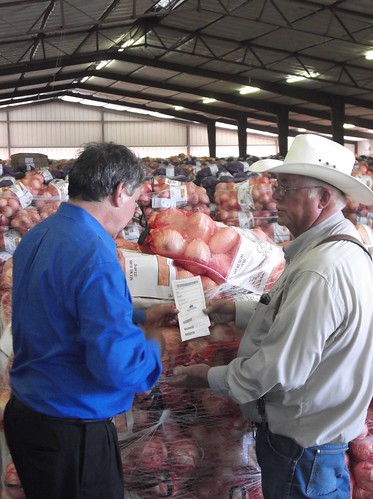
New Mexico is a challenging environment for farmers: the land is dry; soil is hard to come by outside the river valley; temperatures reach the mid-90’s in May and stay there through early October. But farmers, as they’ve been doing for centuries in New Mexico and all across our country, find ways to overcome challenges and make a living from the land. In many ways, this makes us New Mexicans appreciate our home State, and its beauty, even more.
During a recent trip to New Mexico, I saw the importance of our work at USDA supporting farmers and ranchers where I met, listened to, and shared information with specialty crop producers, visited a newly reopened livestock facility, and attended an agricultural roundtable. I was reminded that farmers and ranchers in New Mexico have seized on many unique opportunities available to them and a long, proud history of agriculture upon which to draw.
USDA’s commitment to family farms and ranches, rural communities and rural economies was illustrated by my visits to Gillis Farms, their Desert Springs Produce onion shed, and a similar business, Carzalia Valley Produce, operated by the Johnson family. These farms and produce companies continue to grow onions, green chile and other fresh produce. Desert Springs Produce, Carzalia Valley Produce, and other small businesses like them have benefitted from grant funds through USDA’s Specialty Crop Block Grant program to assist in marketing their New Mexico products to national buyers. This program, a partnership between USDA and the New Mexico Department of Agriculture, has funded more than 30 projects in New Mexico since 2008, producing great economic benefits to the area. During the summer months, New Mexico supplies over 50 percent of the Nation’s non-storage onions.
The journey through Las Cruces, Deming, and finally Columbus, New Mexico, strengthened my appreciation for the beauty, vastness, and uniqueness of the Southwest desert. Also, it strengthened my belief in how New Mexico agriculture contributes to America’s economic strength through job creation and how important the efforts of USDA are in rural America. By supporting these farmers and ranchers, we are also supporting all the local jobs their work creates, like those for truck drivers, pen employees, inspectors, auction barn managers, grocers, and many more. New Mexico may have a unique and sometimes difficult environment but these men and women persevere, like many others across rural America, and their perseverance benefits so many who depend on them for work, for food, and their leadership in our communities.
Another stop on my trip was a livestock inspection facility on the Columbus, New Mexico/Palomas, Chihuahua, Mexico border. Operations at the facility were temporarily suspended in early March in response to the security situation along the border. We worked very hard following the closure to monitor the situation and make sure that USDA employees and those using the inspection site would be safe when it reopened. Thanks to our efforts, and the work of the State Department, the facility reopened on May 30th. During my visit, I saw first-hand the numerous jobs in both Columbus and Palomas that are supported by the work at the livestock inspection facility. Along with a sister facility in Santa Teresa, New Mexico/San Jeronimo, Chihuahua, Mexico, 12,700-19,000 head of livestock and horses move across the New Mexico/Mexico border weekly during peak season. These aren’t just small towns; they’re robust economies that support vital jobs on both sides of the border.
America’s farmers and ranchers and our rural communities truly are the backbone driving our nation’s economy. It’s the same in New Mexico as I rediscovered its diverse history and traditions that contribute to our unique relationship to agriculture. New Mexico presents unusual challenges to farmers and ranchers, as is true in all rural environments, but it also provides the opportunity for those who are dedicated to the land to garner something truly amazing, something that USDA continues to do our utmost to protect, preserve, and strengthen.
